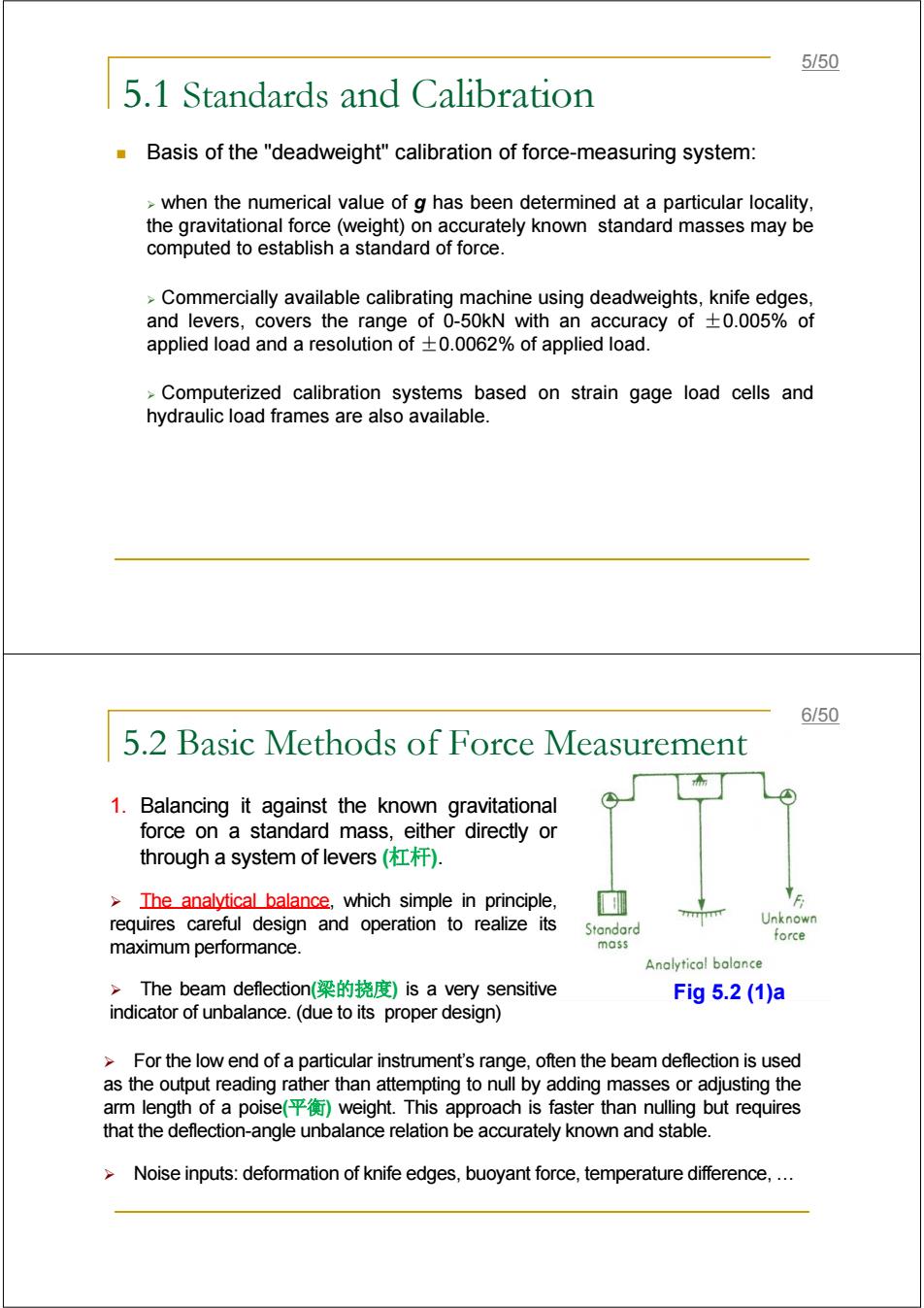正在加载图片...

5/50 5.1 Standards and Calibration Basis of the "deadweight"calibration of force-measuring system: when the numerical value of g has been determined at a particular locality, the gravitational force (weight)on accurately known standard masses may be computed to establish a standard of force. Commercially available calibrating machine using deadweights,knife edges, and levers,covers the range of 0-50kN with an accuracy of +0.005%of applied load and a resolution of +0.0062%of applied load. Computerized calibration systems based on strain gage load cells and hydraulic load frames are also available. 6/50 5.2 Basic Methods of Force Measurement 1. Balancing it against the known gravitational force on a standard mass,either directly or through a system of levers(杠杆). >The analytical balance,which simple in principle, F requires careful design and operation to realize its Unknown Standard force maximum performance. mass Analytical balance >The beam deflection(梁的挠度)is a very sensitive Fig5.2(1)a indicator of unbalance.(due to its proper design) For the low end of a particular instrument's range,often the beam deflection is used as the output reading rather than attempting to null by adding masses or adjusting the arm length of a poise()weight.This approach is faster than nulling but requires that the deflection-angle unbalance relation be accurately known and stable. >Noise inputs:deformation of knife edges,buoyant force,temperature difference,...5.1 Standards and Calibration Basis of the "deadweight" calibration of force-measuring system: ¾ when the numerical value of g has been determined at a particular locality, the gravitational force (weight) on accurately known standard masses may be computed to establish a standard of force. ¾ Commercially available calibrating machine using deadweights, knife edges, and levers, covers the range of 0-50kN with an accuracy of ±0.005% of applied load and a resolution of ±0.0062% of applied load. ¾ Computerized calibration systems based on strain gage load cells and hydraulic load frames are also available. 5/50 5.2 Basic Methods of Force Measurement 1. Balancing it against the known gravitational force on a standard mass, either directly or through a system of levers (杠杆). ¾ The analytical balance, which simple in principle, requires careful design and operation to realize its maximum performance. ¾ The beam deflection(梁的挠度) is a very sensitive indicator of unbalance. (due to its proper design) Fig 5.2 (1)a ¾ For the low end of a particular instrument’s range, often the beam deflection is used as the output reading rather than attempting to null by adding masses or adjusting the arm length of a poise(平衡) weight. This approach is faster than nulling but requires that the deflection-angle unbalance relation be accurately known and stable. ¾ Noise inputs: deformation of knife edges, buoyant force, temperature difference, … 6/50